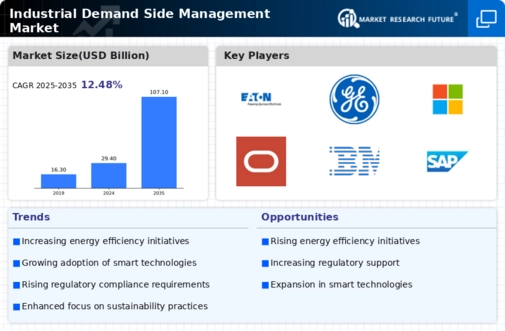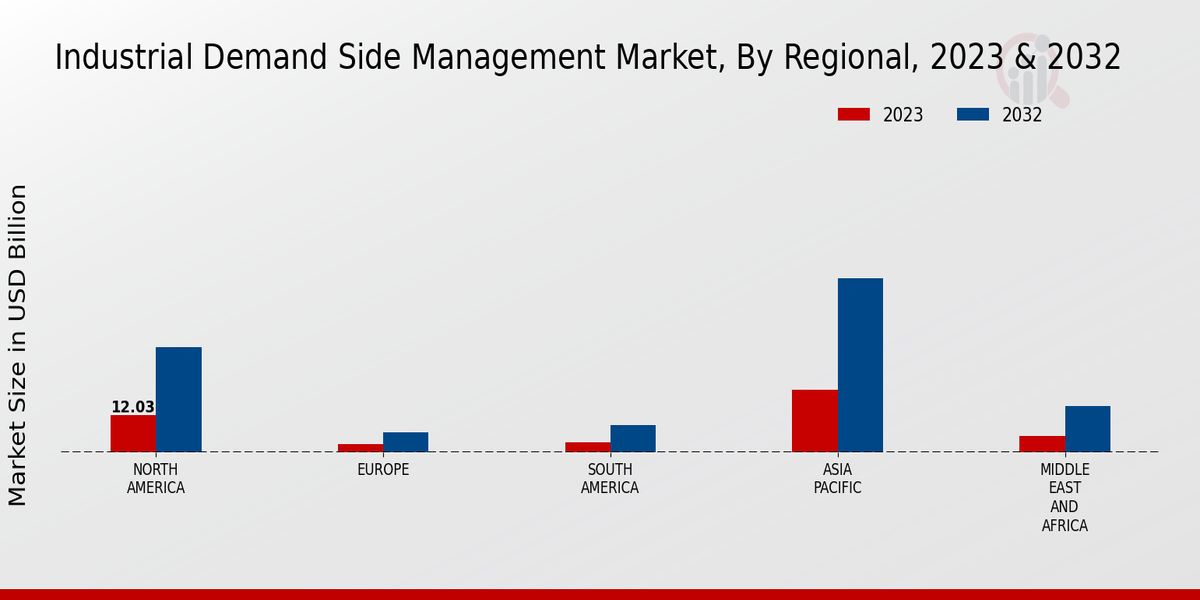Rising Energy Costs
Rising energy costs are a critical driver for the Global Industrial Demand Side Management Market Industry. As energy prices continue to escalate, industries are increasingly motivated to implement demand-side management strategies to mitigate expenses. By optimizing energy consumption and enhancing operational efficiency, companies can significantly reduce their energy bills. This trend is particularly evident in energy-intensive sectors such as manufacturing and mining, where even minor reductions in energy usage can lead to substantial cost savings. The urgency to address rising energy costs is likely to propel market growth, as industries seek effective solutions to manage their energy consumption.
Growing Energy Efficiency Regulations
The Global Industrial Demand Side Management Market Industry is experiencing a surge in energy efficiency regulations imposed by governments worldwide. These regulations aim to reduce energy consumption and greenhouse gas emissions, compelling industries to adopt demand-side management strategies. For instance, the European Union has set ambitious targets for energy efficiency, which could lead to substantial investments in demand-side technologies. As a result, the market is projected to reach 29.4 USD Billion in 2024, reflecting a growing emphasis on compliance and sustainability. This regulatory landscape encourages industries to innovate and implement energy-efficient practices, thereby driving market growth.
Technological Advancements in Smart Grids
Technological advancements in smart grid infrastructure are significantly influencing the Global Industrial Demand Side Management Market Industry. Smart grids facilitate real-time monitoring and management of energy consumption, allowing industries to optimize their energy use. The integration of Internet of Things (IoT) devices and advanced analytics enables predictive maintenance and demand forecasting. These innovations not only enhance operational efficiency but also contribute to cost savings. As industries increasingly adopt smart grid technologies, the market is expected to grow substantially, with projections indicating a rise to 107.1 USD Billion by 2035. This trend underscores the importance of technology in shaping energy management strategies.
Increased Focus on Sustainability Initiatives
The Global Industrial Demand Side Management Market Industry is witnessing an increased focus on sustainability initiatives among corporations. Many companies are adopting sustainability goals that align with global climate targets, leading to a heightened demand for energy management solutions. For example, industries are investing in renewable energy sources and energy-efficient technologies to reduce their carbon footprint. This shift not only meets regulatory requirements but also enhances corporate reputation and competitiveness. The market's growth trajectory, with a projected CAGR of 12.48% from 2025 to 2035, reflects the potential for demand-side management solutions to play a pivotal role in achieving sustainability objectives.




















Leave a Comment